Nextorch GT-AAA PRO Glo Toob & GT-AAA IR Tactical Signal Lights Review
Posted by Mandu Moses on Oct 25th 2024
Are the Nextorch GT-AAA PRO and GT-AAA IR Tactical Signal Lights the best choice for serious adventurers and professionals? Built to withstand harsh conditions, these tools are designed for those who demand reliability in critical situations. Whether underwater or on rugged terrain, they aim to deliver where it matters most. In this review, we’ll cover their key features, performance, and how they hold up in real-world use.
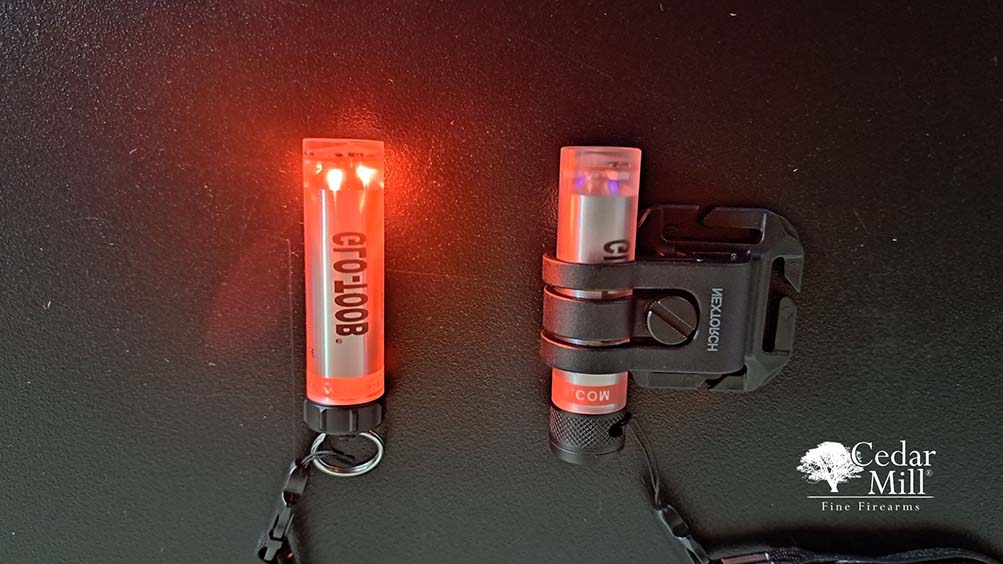
As I stand over my workbench, I’m greeted by two unique little devices from Nextorch. These glow sticks, or GLO-TOOB devices, come in a few configurations and are marketed as high-intensity, waterproof light sources. They’re designed to be fully submersible, and the GT-AAA PRO is specifically labeled for scuba diving. However, in my testing, I found it to be less intense than advertised, though still reliable for specific tasks.
GT AAA Pro: High-Intensity Waterproof Light
The GT AAA Pro boasts waterproof capabilities up to 200 meters—deeper than most recreational divers typically venture. Powered by a AAA battery, it’s available in multiple colors, including red, yellow, green, blue, and white. There are three programmable modes:
- Constant ON at 100% with a runtime of 5 hours and 30 minutes.
- Constant ON at 25%, which stretches up to 27 hours.
- A 1 Hertz flash mode, though no specific runtime is provided for this mode. I estimate that, given the reduced intensity, the flashing could at least double or triple the runtime.

The GT-AAA PRO is a compact light weighing only 0.9 ounces and can be viewed from almost any angle. Its LED has a lifespan of 100,000 hours and is housed in an impact-resistant body that can operate in extreme temperatures ranging from -4°F to 176°F. It’s negatively buoyant, meaning it will sink, so you’ll want to ensure it's securely fastened to your gear.
As you can see in the image below, the device has three pieces: the battery, the body, and the cap.
GT-AAA IR: Tactical Infrared Signal Light
Next up is the GT-AAA IR, the infrared version of this light. Unlike the PRO, this one isn’t intended for deep water, but it is rated IPx8 water-resistant, making it ideal for terrestrial operations.
Like the PRO, it features three operating modes:
- Constant ON at 100% for 5.5 hours.
- 25% intensity for a full 27 hours.
- A flash mode, again with no specified runtime, but likely longer than constant on.
What makes this light unique from the scuba light, is that it comes with an attachment that can be bonded to your gear, your helmet, and along with other convenient methods of attaching it to tactical equipment.
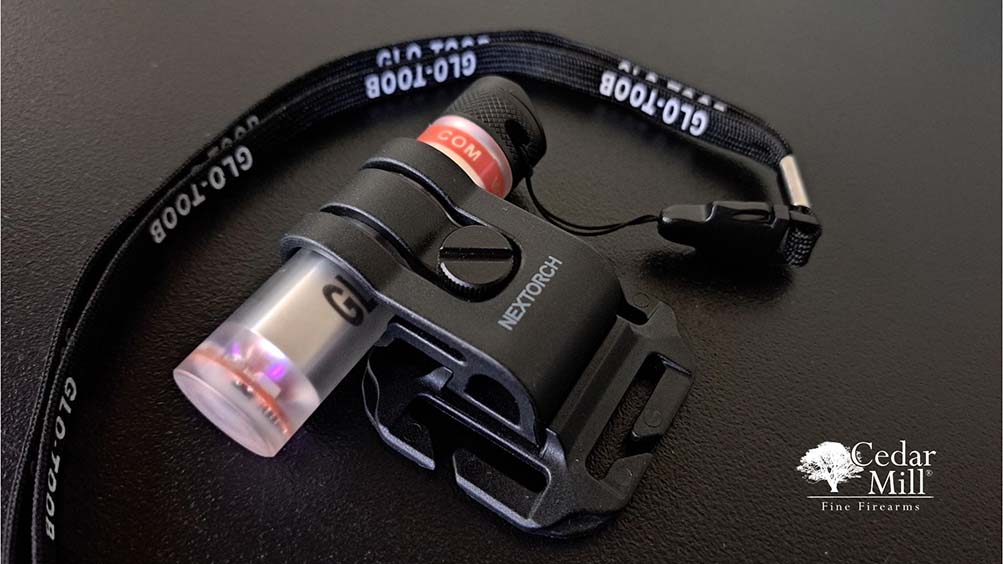
This is due to the versatile base plate and the GLO-TOOB tactical kit. As you can see in the image below, the base plate is made to fit 1-inch webbing, which is common on most tactical gear and MOLLE attachments. It also allows for hook-and-loop fasteners or a lanyard for hanging around your neck.
The viewing angle is likewise 360 degrees. The LED itself is an 850 mm Infrared ray LED. Weighing under 1 ounce, it operates in temperatures similar to all reasonable environments—from -4°F to 131°F.
If you're working or playing somewhere that's hotter than 131 0F, you should probably find some air conditioning. That's not healthy.
Button Operation
What's great about these lights is that they are small, versatile, and easy to use. The Pro version comes with a twist cap to turn the light on and off. However, I wouldn’t say this cap operates easily, but more on that later.
The IR light, on the other hand, has a push-button cap, which I much prefer. The waterproof button provides audible click indicators, making it easier to cycle through the modes: 100%, 25%, and flash. Each time you click the button, it moves to the next mode and then back to OFF. So, you cycle through 100%-OFF-25%-OFF-flash-OFF, and so on.
As noted in the instructions, it’s best to use night vision or another tool that can detect infrared light when operating the IR version. This is because infrared light is invisible to the human eye, so you could easily be pushing the button thinking nothing’s happening, when in reality, it’s working just fine. If you accidentally leave it ON and forget about it, you’ll drain the battery, leaving you with a dead light when you need it.
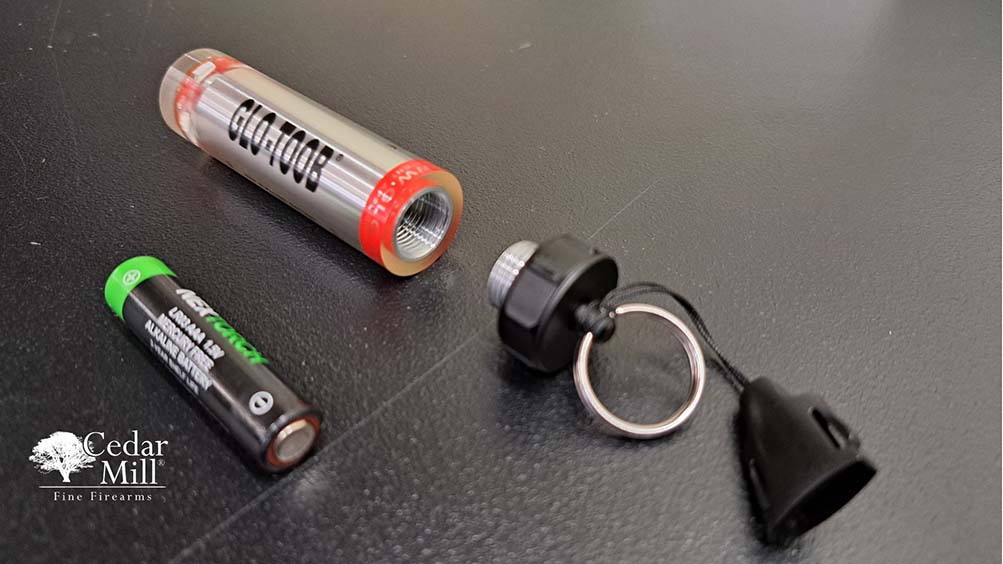
That being said, the rest of the device functions exactly like the Pro version. When you unthread the cap, you reveal a tube where you insert the AAA battery. The positive terminal faces down, and as you thread the cap back onto the body, it makes contact with the negative end of the battery, allowing the circuit to function.
Both models feature a reflective aluminum insert visible through the polymer shell. The light is emitted from the bottom, opposite the cap. Now that we've covered the push-button cap on the IR, let's discuss the twist cap on the Pro. This cap is particularly difficult to manipulate with your fingers due to its small size.
Tips for Operating the Twist Cap
I used the key ring included in the packaging and attached it to the cap, which gave me much more leverage to twist the light on and off. However, it's possible, and even likely, that the light could accidentally turn on if you're carrying it with keys in your pocket. On its own, you'd probably be fine, but since it's a key ring, you'll likely attach other items to it. This could provide the leverage needed to twist the light or cap, potentially turning it on and draining the battery.
Comparing Mode Operation: Twist vs. Push Button
In a similar fashion, you cycle through the three modes: 100%-OFF-25%-OFF-strobe-OFF, and back to 100%, just like the IR version. A key difference is the lack of haptic feedback. With a push button, you get the audible click and the tactile feel of the button pressing down and popping back up. The twist cap version of the GT-AAA Pro lacks this feedback. Instead, you need to time it quickly—twisting it ON and OFF, ON and OFF—to cycle through the modes. If you twist and leave it ON, it stays on that mode. Once you go OFF and back ON, it moves to the next mode, and you repeat this process to cycle through all modes.
Testing in Real-World Scenarios: GT-AAA Pro and IR
Unfortunately, I received these lights in October of 2024, so the possibility of heading out to the ocean and testing out the underwater capabilities of the GT-AAA Pro is extremely unlikely. It gets pretty cold in the Pacific Northwest, and even though I have a 7 mm dive suit, winter isn't the best time to go diving along the Pacific coast in the northern climate. The storms off the coast stir up the ocean providing low visibility and provide a terrible diving environment.
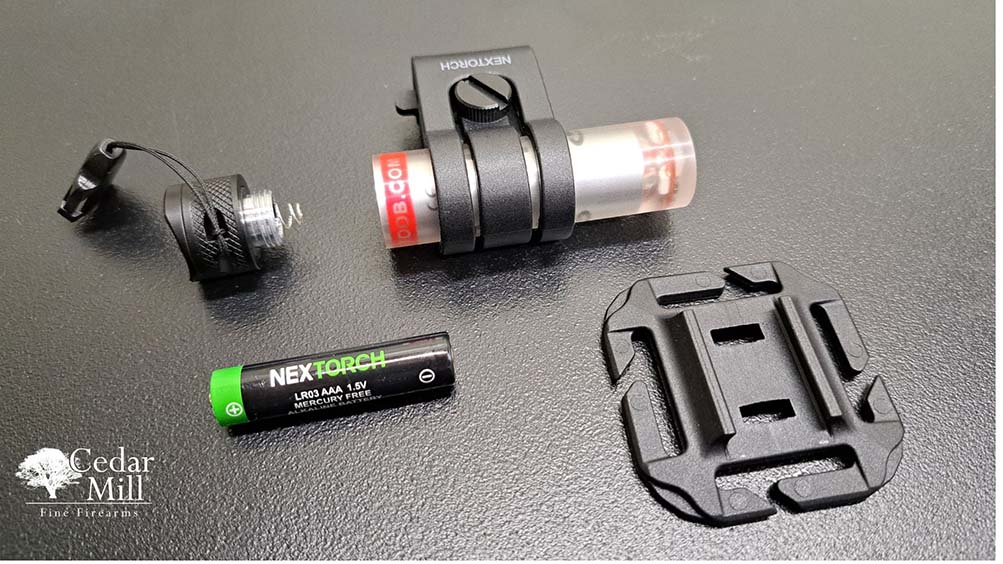
However, the GT-AAA Pro's functionality works just as well on shore as it does underwater. Likewise, the infrared (IR) version isn’t submersible as deep as the pro and wouldn't be used in scuba diving. Yet, with the MNV 100 night vision scope that I reviewed last month, I can definitely execute some real-world tests and play around with it to see how it does. In fact, that's exactly what I did.
Night Vision Testing: GT AAA IR in Action
Starting with the infrared (IR) version, it performed well at night. It's not a bright light—its purpose is to distinguish friend from foe or to provide infrared feedback on tagged targets. There are other practical uses for the light, but these were the situations I tested using a Gen 2 night vision set.
The unit worked as expected. The darker the surroundings, the easier it was to spot. However, since it's a low-output light meant for identification signaling, it can easily be overwhelmed by other light sources. If you pass by a security camera, game camera, streetlight, or any other infrared interference, the light can easily be washed out.
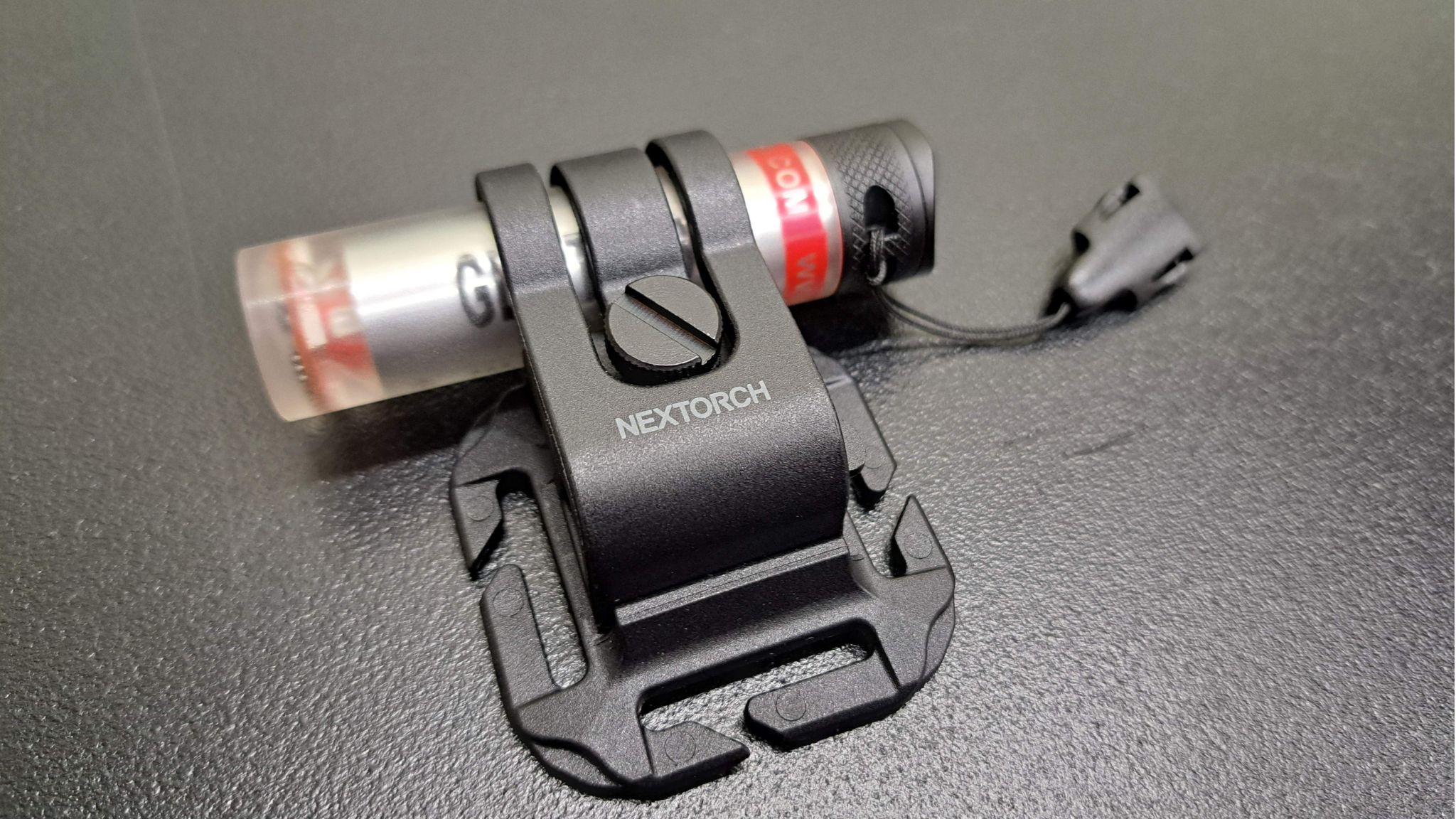
Out in the darkness of the field, the GT AAA IR is easy to spot and identify. It won't light you up like a Christmas tree, and it's unlikely anyone will see the light before they see you. However, when looking at two targets through a night vision optic, it's simple to identify which one is wearing the device and which one isn’t. The build quality is exceptional, and the ability to remove the ARC adapter adds to the unit’s versatility.
This unit works well on my plate carrier. If I want to attach it to a vehicle, object, or something else, I can easily lift and release it, slide it off the ARC adapter, and secure it with a zip tie, Velcro, or the attached lanyard to whatever I want to tag. It also slips right back onto the ARC adapter, which remains securely attached to my vest.
GT AAA Pro Underwater Capabilities and Use Case
Again, the GT AAA Pro isn't a very bright light. At full illumination, you need to place it directly next to the object you're trying to see. It's not designed for general illumination but rather to help identify you or a target.
For example, it works well when attached by the lanyard to your buoyancy control device (BCD) or, for more creativity, the top of your scuba tank. I recommend attaching it to your BCD because if it comes loose from the tank, you're unlikely to catch it before it sinks to the ocean floor.
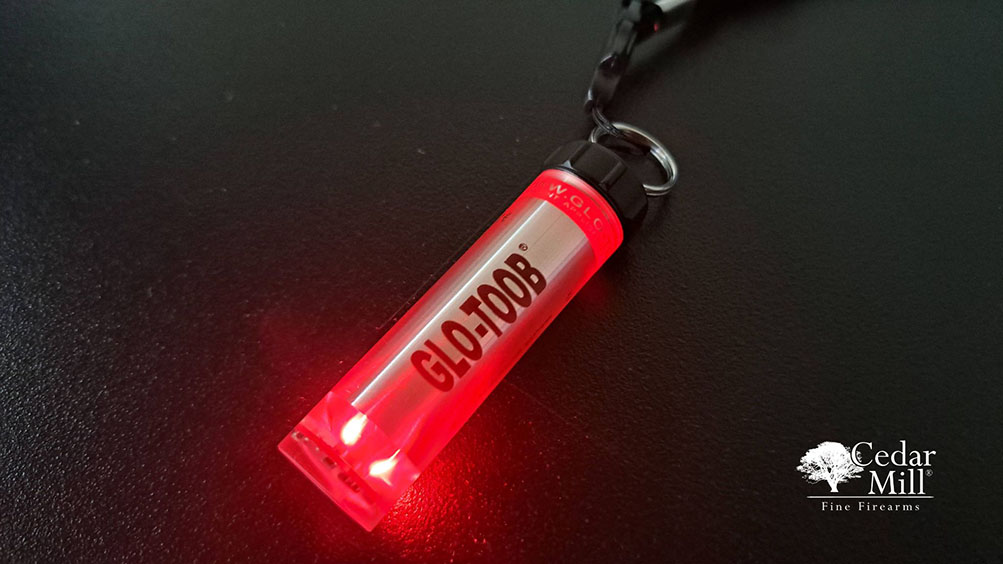
However, attaching it to the front of your BCD presents a challenge: it becomes more difficult to see. When you're scuba diving, you swim headfirst, with your chest angled toward the ocean floor, potentially obstructing the light. Anyone above you might not see the light due to your body blocking the transmission. If you attach it to the back of your BCD or scuba tank, it will be more visible, though there's a higher chance of losing it.
Strobe Mode for Better Visibility
Like its infrared (IR) counterpart, this light doesn’t draw much attention. It's visible from about 20 to 30 feet, but beyond that, it's hard to see, especially if there’s external light contamination.
In a pitch-black environment, the range increases significantly, but underwater visibility remains an issue since it’s never as clear as air. When spelunking or night diving, the strobe mode becomes useful, as the flashing light catches the attention of others in the water, helping to break up their vision.
Flashing lights are easier to spot because they're uncommon, and our eyes are naturally drawn to them. The 100% mode is a bit brighter, but combining the variables of water visibility and light pollution during the day, your best options are either the strobe or 100% mode. In a pitch-black environment with excellent visibility, the 25% mode could be useful. Even on land, when attached to my keychain, the 25% illumination works well in extremely dark situations.
Durable Design and Build Quality
Nextorch has created an ingenious set of personal identification and signaling lights. Whether you opt for the colored lights for above-ground or underwater use, or the infrared (IR) lights for tactical, terrestrial operations, both designs are well-thought-out.
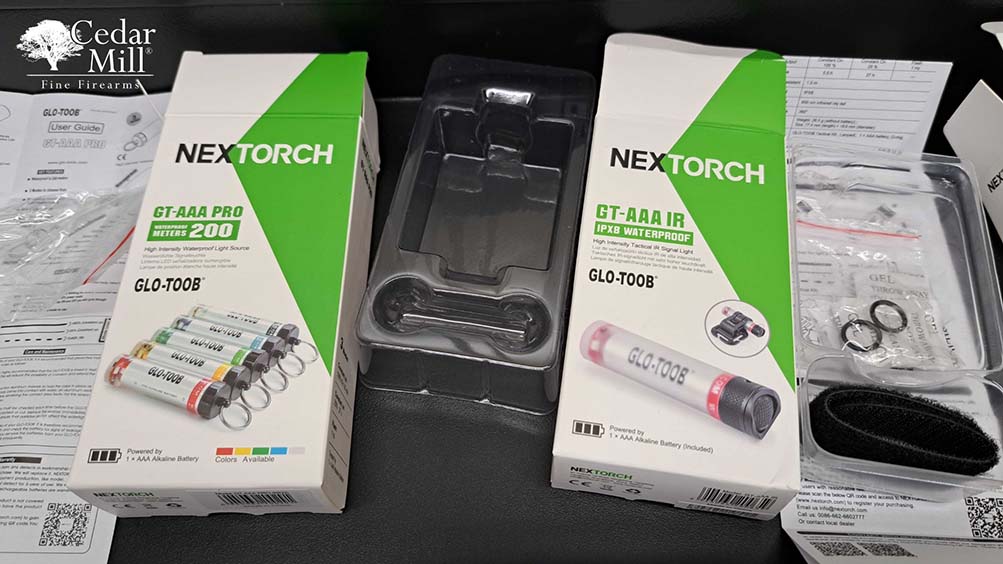
The lights feature a thick, solid, transparent body, durable circuitry, and a coarsely threaded, thick cap. There are ample threads to secure the body, and the knurled edges on the cap make battery removal and replacement easy. The included AAA batteries are long-lasting, and the lightweight design of these devices ensures they are easy to carry anywhere.
Pros and Cons
GT-AAA Pro
- Pros:
- Waterproof up to 200 meters, ideal for divers.
- Compact and lightweight, making it easy to carry.
- Provides 360-degree visibility, useful for underwater signaling.
- Cons:
- Twist cap can be difficult to operate without extra leverage.
- Risk of accidental activation when carried with other items.
- Not intended for general illumination—more suited for marking.
GT-AAA IR
- Pros:
- Versatile mounting options, perfect for tactical use.
- Infrared light is discreet and ideal for night operations.
- Lightweight and easy to attach to a different gear.
- Cons:
- Not as waterproof as the Pro, limiting use in underwater environments.
- Infrared mode is invisible without night vision, making it tricky to operate.
- Easily overwhelmed by other infrared sources in urban settings.
Final Thoughts: A Solid Choice for Signal Lights
When camping, you often don’t need much light since it can ruin your night vision and hinder your ability to adapt to darkness. That’s why the GT-AAA Pro is my go-to camping light, right alongside my Streamlight Boot.
Looking ahead, we'll be doing more night vision testing, videos, and experiments, and the GT-AAA IR will be crucial in that content.
If you’re in the market for a personal signal light, I highly recommend considering the Nextorch GLO-TOOB line. With a variety of colors and applications, their lightweight and well-built design won’t disappoint.
